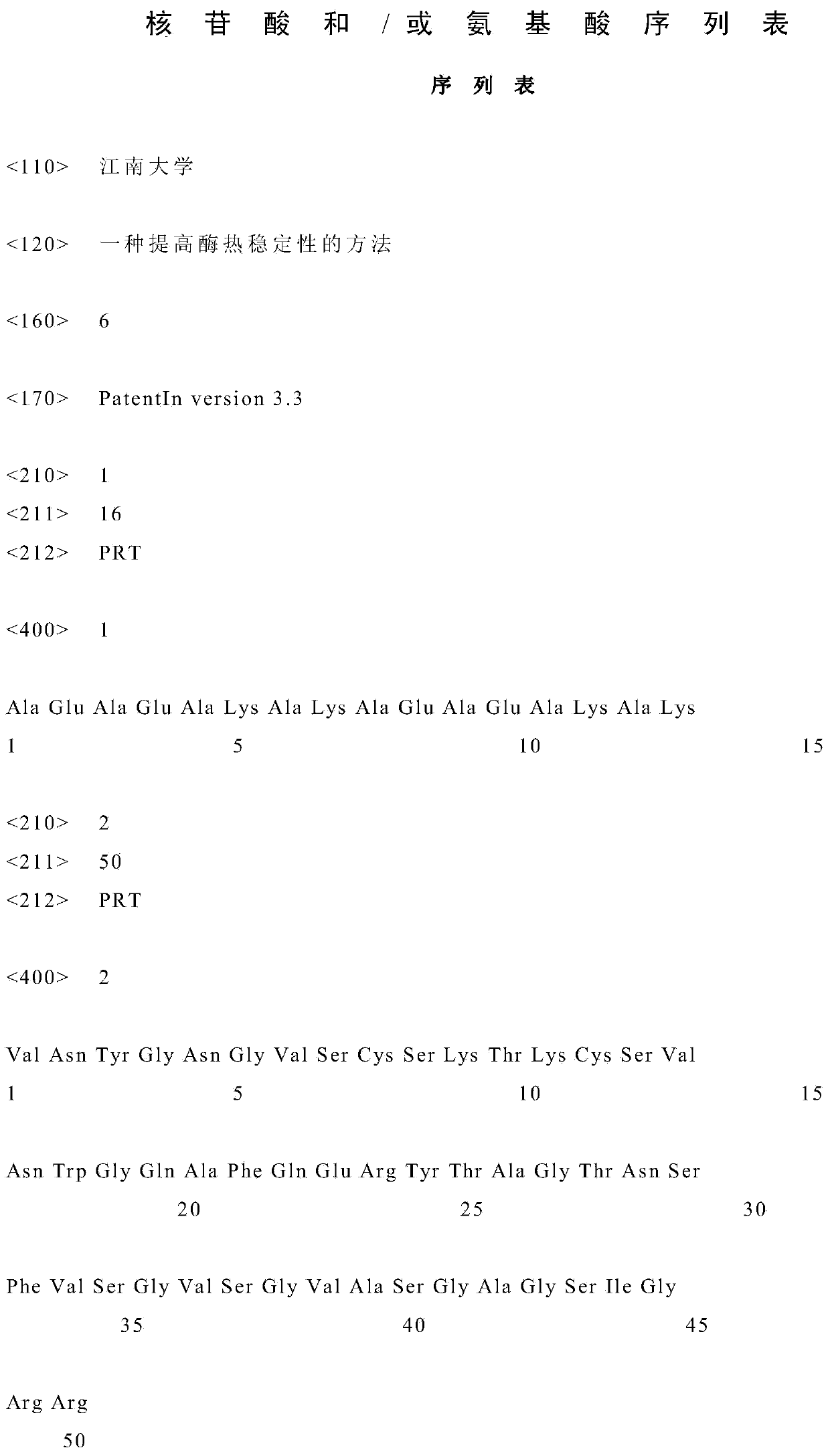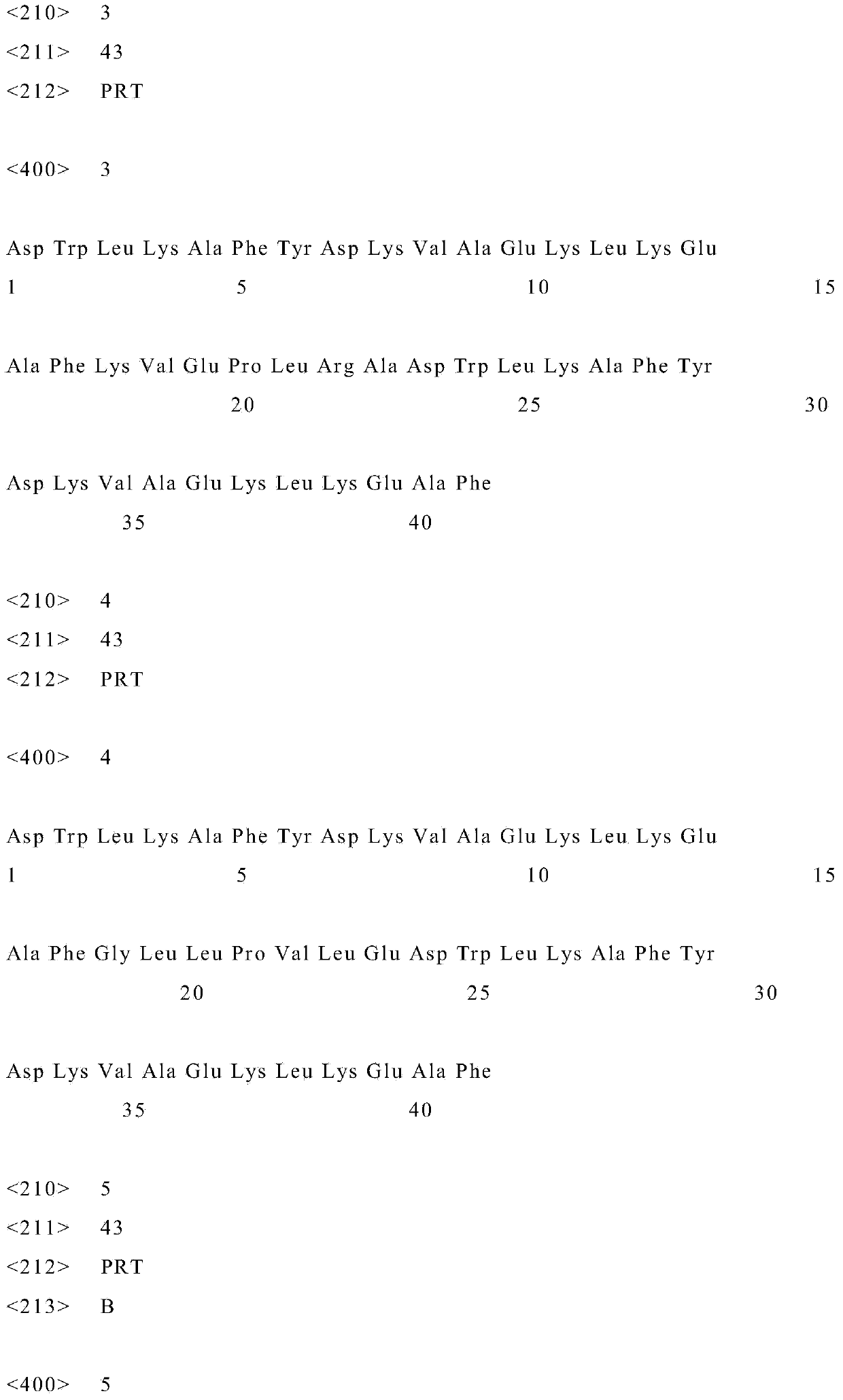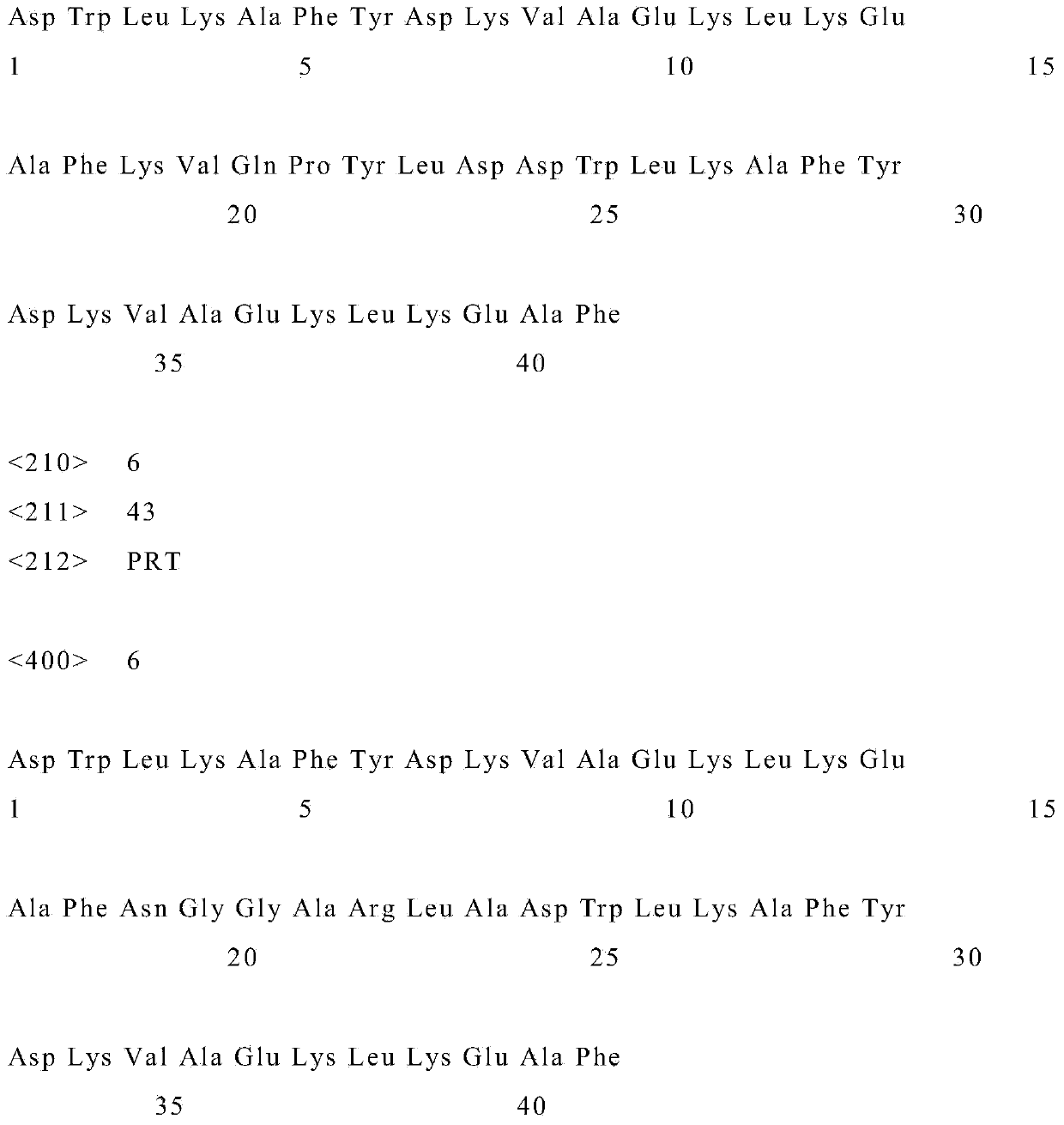Enzymatic thermal stability improving method
A thermostability, recombinant enzyme technology, applied in the direction of chemical instruments and methods, biochemical equipment and methods, enzymes, etc., can solve the problems of inappropriate thermal stability transformation of enzyme molecules, etc., to improve the thermal stability of industrial enzymes, improve Thermal stability, easy to promote the effect
- Summary
- Abstract
- Description
- Claims
- Application Information
AI Technical Summary
Problems solved by technology
Method used
Image
Examples
Embodiment 1
[0023] Example 1: Amino acid sequence of amphipathic short peptide and cloned into plasmid pET-22b(+)
[0024] 1 AEAEAKAKAEAEAKAK
[0025] 2. VNYGNGVSCSKTKCSVNWGQAFQERYTAGTNSFVSGVSGVASGAGSIGIGRR
[0026] 3. DWLKAFYDKVAEKLKEAFKVEPLRADWLKAFYDKVAEKLKEAF
[0027] 4. DWLKAFYDKVAEKLKEAFGLLPVLEDWLKAFYDKVAEKLKEAF
[0028] 5. DWLKAFYDKVAEKLKEAFKVQPYLDDWLKAFYDKVAEKLKEAF
[0029] 6. DWLKAFYDKVAEKLKEAFNGGARLADWLKAFYDKVAEKLKEAF
[0030] According to the above amino acid sequence, the DNA sequence was chemically synthesized, and cloned into the plasmid pET-22b(+) until the plasmid pET-22b(+) / AP
Embodiment 2
[0031] Embodiment 2: Construction of recombinant plasmid pET-22b(+) / AP-enzyme
[0032] The target enzyme gene was cloned into the Nco I and Hind III sites of the expression vector pET-22b(+) / AP. The ligation product was transformed into competent Escherichia coli JM109 for transformation. The conversion method is as follows:
[0033] (1) Under sterile conditions, take 200 μL of competent cells and place them in a sterile microcentrifuge tube;
[0034] (2) Add 1-2 μL of recombinant plasmid to each tube, rotate gently to mix the contents, and place on ice for 30 minutes;
[0035] (3) Heat shock at 42°C for 90s (accurate), do not shake the centrifuge tube;
[0036] (4) Quickly transfer the centrifuge tube to an ice bath to cool the cells for 1-2 minutes;
[0037] (5) Add 800 μL of ordinary LB culture medium without antibiotics to each tube;
[0038] (6) Use a sterile spreader to spread 200 μL of the bacterial solution on an agar plate containing ampicillin, and place it flat...
Embodiment 3
[0040] Example 3: Construction of recombinant enzyme expression strains fused with parental short peptides
[0041] Competent Escherichia coli BL21 (DE3) was transformed. The conversion method is as follows:
[0042] (1) Under sterile conditions, take 200 μL of competent cells and place them in a sterile microcentrifuge tube;
[0043] (2) Add 1-2 μL of recombinant plasmid to each tube, rotate gently to mix the contents, and place on ice for 30 minutes;
[0044] (3) Heat shock at 42°C for 90s (accurate), do not shake the centrifuge tube;
[0045] (4) Quickly transfer the centrifuge tube to an ice bath to cool the cells for 1-2 minutes;
[0046] (5) Add 800 μL of ordinary LB culture medium without antibiotics to each tube;
[0047] (6) Use a sterile spreader to spread 200 μL of the bacterial solution on an agar plate containing ampicillin, and place it flat at 37°C for 20 minutes until the liquid is absorbed, then culture it upside down overnight, and observe.
[0048] Sele...
PUM
 Login to View More
Login to View More Abstract
Description
Claims
Application Information
 Login to View More
Login to View More - R&D
- Intellectual Property
- Life Sciences
- Materials
- Tech Scout
- Unparalleled Data Quality
- Higher Quality Content
- 60% Fewer Hallucinations
Browse by: Latest US Patents, China's latest patents, Technical Efficacy Thesaurus, Application Domain, Technology Topic, Popular Technical Reports.
© 2025 PatSnap. All rights reserved.Legal|Privacy policy|Modern Slavery Act Transparency Statement|Sitemap|About US| Contact US: help@patsnap.com



